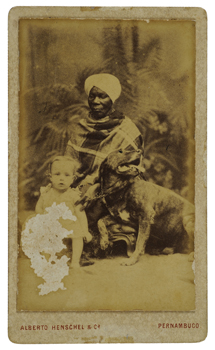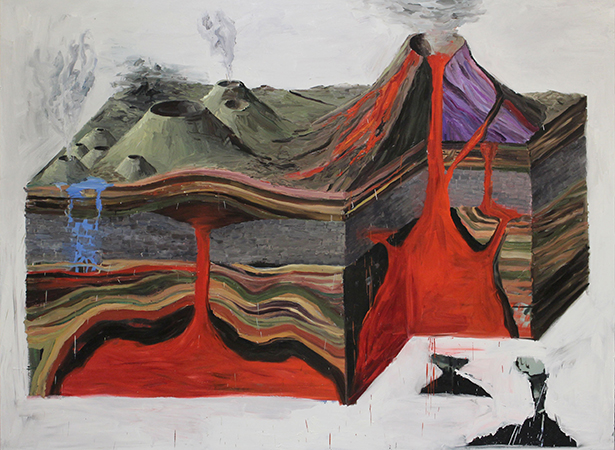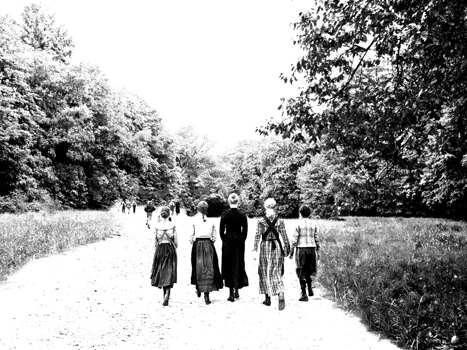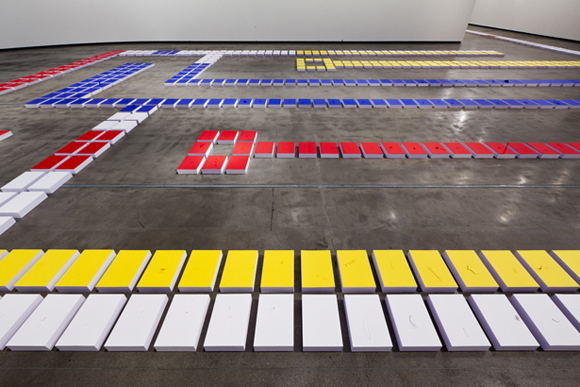Histórias Mestiças (Mestizo Histories)
August 16–October 5, 2014
Instituto Tomie Ohtake
Av. Faria Lima 201 (entrance at Rua Coropés)
São Paulo
Brazil
Hours: Tuesday–Sunday 11–20h
Free admission
T + 55 11 2245 1900
comunicacao@institutotomieohtake.org.br
www.institutotomieohtake.org.br
#históriasmestiças
Curated by Adriano Pedrosa and Lilia Moritz Schwarcz
Histórias mestiças (Mestizo Histories) is not so much a history of mestizaje as it is a mestizaje of many histories. The notion of mestizaje is an essential part of Brazil’s national narrative. The fact that the various groups of Brazilian society (Amerindians, Africans and Europeans) have been able to live together without open conflicts has given rise to a false notion of harmony, of racial democracy: a melting pot. But instead of being an example of a harmonious nation, Brazil is also a country of huge social gaps and shows persistent patterns of social exclusion: in the workplace, in education, in justice, in births and deaths. That is why the very notion of mestizaje—the mixing of races and cultures—can become a dangerous ideology by designating all individuals as mestizos, erasing differences and masking racial prejudice. Here, the notion of histories is open, plural and inconstant; in Portuguese, it refers not only to historical accounts, but also to personal ones, be they factual or fictional. These are historical but mestizo narratives, above all, in their origins, groups and chronologies, as they challenge our traditional history, which conveniently chooses a past, defines the present and foresees the future. It is in this territory that we weave our Histórias mestiças—in threads, fabrics, objects, images, and readings.
There are two profound and traumatic moments in Histórias mestiças: the Portuguese invasion and the African colonization. Although the numbers are controversial, from 25% to 95% of the native population in the Americas in 1492 (estimated at between 1 and 8 million) was decimated by the infamous “encounter” and the undeniable fact is that America was not discovered, but invaded. On the other hand, Brazil received 40% of the Africans who came to the Americas during the slave trade, in a total of about 3.8 million Africans (according to www.slavevoyages.org), which is more than the number of Portuguese that set foot in the country to colonize it. The last country in the Americas to abolish slavery, a nation composed of many indigenous ethnicities lacking citizenship, Brazil has been the stage for the production of visual and written discourses that are ambivalent while tending to naturalize social inequalities.
The various works that make up this exhibition thus tell many histories of social inclusion and exclusion. Histórias mestiças crosses, clashes and juxtaposes around 400 objects from different origins, periods, and territories, in a nonchronological and nonhierarchical way, favoring thematic and conceptual articulations, in seven sections: Trails and Maps, Encounters and Dis-encounters, Masks and Portraits, Cosmologies and National Emblems, Rites, Labor, Weaves and Graphic Inscriptions.
In this context, Oswald de Andrade’s antropofagia (1928) is understood as an incomplete project, and can be reactivated and cannibalized itself as a tool for the devouring of Amerindian and African histories. Learning from the Amerindian and the African implies unlearning Eurocentric histories. Antropofagia can be thought of as an epistemology of the South, in the terms of Boaventura de Sousa Santos, or in a process of de-westernization, according to Walter Mignolo.
Thus, Histórias mestiças that are also political in nature, composed of encounters, dis-encounters, and confrontations, arising from dialog as well as the lack of communication. Fragmented and incomplete, they result from practices of racism and discriminatory regimes characterized by violence in both their origin and destination. Histórias mestiças are marginal and subaltern, multiple and inconstant, fractured and transversal histories; they are histories of flow and reflux, full of segregation and prejudice—they are Brazilian histories.
A reader will be published at the beginning of the exhibition, and a catalogue at the end of it, edited by Adriano Pedrosa and Lilia Moritz Schwarcz.
The exhibition and publications are sponsored Grupo Segurador Banco do Brasil e Mapfre.




